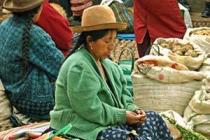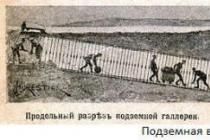Edam cheese.
Ingredients:
12-15 liters of milk
sourdough MesoIII
rennet extract
calcium chloride (optional)
1. Slowly heat the milk in a water bath to 29 degrees, stirring occasionally.
2.Add: 1/2 teaspoon MesoIII powder
Let the powder dissolve on the milk surface for 2-4 minutes before mixing.
Mix well with vertical movements (at least 20 times)
3. Let the milk mature for 30 minutes at 29 degrees.
4. If necessary, add 3.75 ml (3/4 teaspoon) calcium chloride diluted in
1/4 cup water
5. Add 3/4 teaspoon of rennet diluted in 1/4 cup of water. Good
stir in vertical movements at least 20 times.
6. Leave for 30-45 minutes, until a dense clot forms and it reaches the stage
"clean tear" (meaning that when you pry a clot with your finger, it breaks and in
there are no small crumbs). When forming a clot, it is important to maintain a temperature of 29
7. Cut the curd into cubes with a side of about 1-1.5 cm and mix gently for
10 min. Gradually (within 20 minutes) heat up to a temperature of 33 degrees. Carefully stir without letting the clot pieces settle to the bottom.
8. At the second stage of heating, remove half (about 6 liters) of whey and add warm water with a temperature of 44 degrees. Stir gently after adding water to keep the temperatureestablished 37 degrees. Remember to increase the temperature of the water bath accordingly to 37gra. Leave the curd at this temperature for 25 minutes. Let the clot settle to the bottom for 10 min.
9. Put the curd in a colander preheated with very hot water for 5 min.
runoff.
10. Put the cheese into a mold and place in a press. Compress cheese gradually increasing
pressure. The cheese is turned over in the mold with each increase in the pressure of the press. Leave at high pressure for 12-16 hours (heads more than 1 kg) (small heads can be pressed about 6 hours).
11. Take the cheese out of the press and put it in the stored whey at a temperature of 47 degrees.
Keep the cheese in the whey for 4-10 minutes (depending on the size).
12. Put the cheese in a clean cloth in a press and press at medium pressure for 1-2 hours to
strengthening.
13. Remove cheese from the press and place in concentrated brine. Keep in brine 12
hour / for every kilogram of cheese.
14. Dry the cheese at room temperature, preferably lying on a wire rack or cheese mat until until the surface of the circle is dry. Then cover with wax.
13. Cheese can be eaten after 45-60 days of ripening in a cold room. (Cheese made from pasteurized milk - 60-90 days). For full maturity, it is necessary to give the cheese 6 months. Regulartemperature 10-15 degrees, at a temperature of 5 degrees, the best results are achieved, although the timematuration and increases. If moisture appears under the wax or in the vacuum package,then the ripening temperature is too high and should be reduced. remember that the temperaturein the basement has a gradient in height, and the ripening temperature can be adjusted,shifting the cheese higher or lower. In the process of ripening the head of cheese, it is necessaryturn over 2-3 times a week.
"Cheese production" T.I. Shingareva, R.I. Ramanauskas, Minsk 2008
10 minutes
Servings
Weights and measures table
Ingredients:
- milk 16 liters
- lactic acid cultures 1/2 tsp
- calcium chloride 3/4 tsp
- liquid rennet starter 3/4 teaspoon
- salt to taste
For cooking, you may need:
Cooking method:
- 1.6 kg
Sterilize all kitchen utensils and utensils you will use (spoons, pots, measuring containers, etc.). Wash the work surfaces on which you will place the kitchen utensils thoroughly with hot soapy water, then with clean water and disinfect.
Put the saucepan with milk on a hot water bath and, stirring slightly, heat the milk over low heat to 31 ° C. Turn off the fire.
Place the lactic acid cultures on the surface of the milk and let it stand for about 5 minutes to curdle.
Using a slotted spoon, gently move the cultures to the bottom with movements from top to bottom, without shaking the milk. Cover the milk with a towel and soak for about 30 minutes, maintaining the temperature at 31 ° C.
Dissolve calcium chloride with 1/4 cup (50 ml) cold water and add to milk in a downward motion.
Dilute the rennet with 1/4 cup (50 ml) cold water and add to the milk. Move the starter to the bottom using a top-to-bottom motion and stir the mixture well. Cover the milk with a towel and soak for about 30 minutes, maintaining the temperature at 30 ° C.
Insert the long, flat blade of the cheese knife into the curd at a 30 ° angle and slowly lift to the surface of the curd. If the curd cracks or breaks, you can cut it. If the break is uneven and slight, leave the curd for another 5-10 minutes and then try cutting again.
Using a knife with a long blade and a slotted spoon, cut the curd in a saucepan into cubes of 1.2 cm.To do this, first cut it vertically into strips 1.2 cm wide.Then, also cut with a knife in the same strips, but already perpendicular to the first, so that on the surface of the curd you get squares. After that, use a slotted spoon to cut the top layer of cottage cheese to a depth of 1.2 cm so that you get cubes. Cut the remaining curd in the same way. Leave the curd for 5 minutes to separate the whey.
Cottage cheese in a saucepan, stirring slightly, heat in a water bath over low heat to 33 ° C for 15-20 minutes. Don't stir the curd too quickly. Leave it on for 5 minutes to compact and settle.
With a cup, pour off some of the whey to the surface of the curd by pouring it into another saucepan. Pour as much hot water into the curd pan as you drained the whey. Bring the temperature of the curd to 37 ° C and stir it for 30 minutes, maintaining the set temperature. Leave the curd to settle and clump.
Line a large perforated form with a diameter of 20 cm and a height of 10 cm with gauze. Drain the whey from the saucepan, lightly dampen the mold with it to warm it.
Put the cottage cheese in a mold, lift the ends of the gauze, collect over the cottage cheese and tie. Cover the mold with a lid of a smaller diameter than the mold. Place the mold in a cheese press and let the cheese stand on medium pressing for 30 minutes.
Heat the remaining whey in a saucepan over medium heat to 50 ° C. Remove the mold with cheese from the press, untie the cheesecloth, put the cheese out of the mold in heated whey and leave for 20 minutes. During this time, turn the cheese several times to soak it in the whey for the same time on all sides.
Remove the cheese from the whey. Line the mold with clean cheesecloth, put the cheese in the mold, wrap the loose ends of the cheesecloth, cover with a lid. Put the mold in a cheese press and keep the cheese under strong pressing for 6-7 hours.
Prepare the brine. To do this, mix water and salt in a 5: 1 ratio. Heat the water until the salt dissolves, then cool to 13 ° C. Remove the form with cheese from the press, untie the cheesecloth. Soak the cheese in brine for 12 hours, turning over after 6 hours.
Remove the cheese from the brine, place it on a metal baking rack lined with a cheese mat and leave for 2-3 days at room temperature. Turn once or twice a day.
When the surface of the cheese is dry, you can wax it or leave it to ripen without waxing.
For cheese with a natural rind.
Prepare a container for drying cheese. You will need a large (30 L) plastic (non-colored) food storage container with a lid.
Place a baking rack inside the container and cover it with a large white plastic cutting board. Place a cheese mat or bamboo sushi mat on the board (treat before use).
Put the cheese in a container, close it with a lid and leave the cheese to ripen at a temperature of 10-12 ° C and a humidity of 85%. Maintain adequate humidity by opening the container lid.
Turn the cheese every other day and wipe the surface with a cloth dampened in saline... To prepare it, bring 1 glass of water to a boil, cool, then add 2 teaspoons of salt to the water and stir.
For waxed cheese.
Cover the cheese with 2-3 layers of cheese wax. (Don't use paraffin wax!) Melt the wax in a non-cooking pot over low heat. Holding the top and bottom of the cheese head sideways with your fingers, dip the bottom of the side of the cheese into hot wax. Slowly turn the cheese, as if rotating the head around an axis, until its side surface is completely covered with wax. Hold the cheese over a saucepan for a few seconds until the wax stops dripping, then place it on the parchment. Repeat the procedure 2-3 times if necessary. Let the cheese dry before each dipping in wax. Wax the top and bottom of the cheese in the same way.
Leave the cheese to ripen at a temperature of 10-12 ° C and a humidity of 85%. Turn it over daily.
Both types of cheese (both natural rind and waxed cheese) are ready to eat after 2 months of ripening. If you wish, you can leave the cheese to ripen longer for a richer flavor.
Milk preparation
For Edam, cow's milk aged for about 4 hours is used.
Starter cultures art.1835 from the kit are added to milk cooled to + 32 ° С: following the rules of asepsis and antiseptics, the culture is scattered over the milk surface, left for some time on the surface for swelling, after which it is thoroughly mixed with milk to evenly distribute the starter culture, leave on 25-30 minutes.
(calcium chloride) is dissolved in 50 ml of boiled drinking water at room temperature and added to milk with thorough stirring.
Rennet addition
Important! The dose of the milk-clotting enzyme can differ several times depending on the properties of the milk. We recommend that you always carry out a coagulation test and calculate the dose of the enzyme individually for each specific case.
Dissolve the contents of the sample vial (ferment starter culture (pepsin)) in 100 ml of boiled drinking water at room temperature. Add the enzyme solution to the milk with constant stirring *.
* stirring is carried out intensively, without creating currents circulating in a circle, evenly throughout the entire volume, for 5-7 seconds.
Stop the movement of milk. In moving streams of milk, the curd does not form properly.
Clot test and treatment
The milk is fermented with the formation of a curd and its exposure for about 45 minutes.
A clean separation of the curd from the whey should be achieved. There are many verification methods, for example, you can put a slotted spoon on the surface of the clot - if properly rolled, transparent serum will pass through its holes, and the clot will elastically bend by several millimeters under the influence of the weight of the slotted spoon. If it hasn't already, leave the clot for a few more minutes.
Cut the clot into 8-10 mm sticks. At an angle, cut the columns into cubes.
Leave it on for 5 minutes to allow the cut curd to thicken slightly and settle, and the serum separates.
Stir the mass slowly for 20 minutes, without applying excessive mechanical stress to the clots. In a water bath, slowly increase the temperature with constant stirring: in 20 minutes the temperature should rise to + 34 ° C ... + 35 ° C. During this time, the curd becomes denser and more whey is separated. This process is called "drying" or "closing" the curd.
Then, remove the whey to the grain level, keep it separate.
After that, gradually increase the temperature until the total temperature reaches + 37 °. Stir to compact the cheese mass, about 40 minutes and reach a pH of 6.0-6.1
Place the curd on a napkin in a mold.
We press 4 kg for 20 minutes.
At this time, heat the previously drained whey to + 48 ° C, after 20 minutes we take the cheese out of the mold and put it in warm whey for 30 minutes (in a napkin), after 15 minutes turn it over.
Turn over, press with a weight of 15 kg for 7-8 hours.
Then place the cheese in a 22-25% brine for 10 hours.
Edam cheese belongs to the group of Dutch cheeses that are made from cow's milk.
Traditionally, Edam cheese is ranked among hard and semi-hard types of cheeses, the fat content of which does not exceed 45%.
Dutch Edamer cheese is distinguished by its spherical shape and pale yellow color, the cheese is covered with paraffin on top.
Gourmets always recognize the first-class Dutch Edam cheese by the presence of pronounced nutty notes in the taste of the product.
Although the recipe for Edam cheese was first reproduced in the Netherlands, it is now produced in many countries around the world.
There are many varieties of this cheese, differing mainly in the fat content in dry matter - 30, 40, 45 and 50%.
Milk for making Edam cheese should be normalized for fat content, for example:
- for the production of cheese with a fat content in dry matter of 30% - 1.6% fat;
- for the production of cheese with a fat content in dry matter of 40% - 2.6% fat;
- for the production of cheese with a fat content in dry matter of 45% - 3.0% fat;
The crust of Edam cheese should be smooth, even, thin. May turn gray-green during maturation with mold growth.
For sale, the cheese is coated with polyvinyl acetate or a red paraffin-wax alloy.
The cheese dough ranges from ivory to yellowish, slightly brittle when bent.
The structure is plastic, soft (softer than that of Gouda cheese). A small number of eyes - from round to oval, the size of a pea.
The taste and aroma of Edam cheese is pronounced, cheesy, slightly sour and spicy.
Due to the high pH of the cheese, only bacteriologically pure milk should be used when preparing Edam.
Milk is subjected to thermal short-term high-temperature treatment at temperature treatment at 72º C. for 15-30 s. Cooled to 30ºC. In summer, use more than low temperature processing.
According to the Edam cheese recipe, 0.015 - 0.02% calcium chloride (dissolved) and 0.005 - 0.02% sodium nitrate should be added.
Dyes are not used or, if necessary, 0.001% is added.
Starter culture: Add 0.3 - 1% starter culture at 30º C and incubate for 20 - 30 minutes. The acidity reaches 0.155 - 0.165%.
Rennet should be used according to the manufacturer's specification, corrected for the clotting capacity of the particular milk.
Clotting temperature 30 - 31º C. The curd becomes firm and ready to cut in 30 minutes.
The curd should be cut into 1 cm cubes. Stir in the whey until the curd floats freely.
The grain must be kneaded for 15 - 30 minutes, then it is precipitated and removed from one third to half of the whey.
Before the second heating, the mixture of whey and grain must be mixed and water with a temperature of 50 - 60 ° C should be added to approximately the initial liquid level.
In addition, hot water can be sprayed into the mixture up to a set end temperature of 36 - 37 ° C. Hot water should not plasticize the curd.
The acidity of the whey is reduced to 0.07 - 0.09%. Stir the mixture for about 40 minutes until the curd mass is compacted and a pH of 6.0 - 6.1 is reached. The curd is precipitated before the formation of the seam.
Removing whey: Flat plates (squares) are placed on the surface of the curd to compact the curd. Remove the serum.
Shaping: Special molds for cheese are laid out with napkins. The cheese mass is cut approximately to the size of the molds. Fill the mold with cheese mass and cover before pressing upper part with a napkin.
The traditional molds are in two parts and are rounded for a 15 cm head. The lower part of the mold is perforated. Currently, plastic molds are used instead of wooden ones.
You can buy a mold for Edam cheese in the online store with delivery by Russian post or courier service.
Pressing: The cheese is pressed at a pressure of 10 - 15 kPa for 3 hours. During pressing, the cheese is turned over in a mold (also sometimes dipped in hot whey at 48 ° C).
The cheese is turned over and left under a press overnight (under a pressure of 15-20 kPa). During pressing, the temperature is maintained at 15 - 20 ° C.
Salting: The cheese is immersed in 22 - 25% brine at 16 ° C for 2 - 3 days or at 12 - 14 ° C for 3 - 4 days. The cheese crust is dried in a warm room.
Ripening: Lead for 3 - 4 weeks at a temperature of 12 - 14 ° C. The cheese rind is washed before coating.
If you are making Edam cheese for sale, cheeses destined for export should be coated with red paraffin wax at 120 - 140 ° C.
The cheese is dried in storage at a temperature of 8 - 10 ° C. Before being sold, the cheese is wrapped in film or foil. Withstand 3 - 8 weeks, depending on the size of the cheese and storage temperature.
As you know, cheese is a dairy product and a valuable nutritional component in our diet. What is the real value of cheese and how is it good for us?
Cheese is made from milk using clotting enzymes and lactic acid bacteria or by melting dairy products.
In modern cooking, there are about 1000 different varieties of cheeses with different consumer properties, composition and production method.
Classification of cheeses
In the commodity nomenclature, the following types of cheese are distinguished:
- soft;
- semi-solid;
- solid;
- pickle;
- melted.
Soft cheeses
This type of cheese includes lactic acid products with a curd (soft) consistency. For their production, neither smoking, nor melting, nor any additional processing is used. Such cheeses can be either with a crust (moldy or natural) or without (fresh cheeses).
Fresh cheeses: Ricotta, Feta, Mizitra, Mozzarella.
Soft fresh cheeses with a moldy crust: Camembert, Brie, Bonchester.
Cheese with washed mold crust: Maroilles, Mont d'Or, Romadur, Limburger, Dorogobuzhsky.
Cheese from goat milk: Crottin de Chavignol, Saite-Maure, Picodon.
Semi-hard cheeses
This lactic acid product is produced in a similar way, without melting or smoking, but with a denser, creamy consistency. Covered with a natural or moldy crust. The pressing method and ripening period differ from soft cheeses. Often semi-solid milk product packed in wax.
These cheeses are among the most familiar to the Russian consumer.
These include: Cantal, Edam, Gouda, Oltermanni, Russian, Dutch, Kostroma, Uglich, Estonian.
Among exotic cheeses, the subclass "blue cheeses" belongs to semi-hard cheeses: Roquefort, Stilton, Gorgonzolla, Brue de Brisse, Dorblu (with mold in the whole mass of cheese).
Hard cheeses
Hard and semi-hard cheeses are the most popular and familiar to the domestic consumer.
This type of cheese has a dense and firm consistency, covered with a wax or natural crust. It differs from the previous types in terms of ripening and pressing method. But among the hard cheeses there are no moldy ones due to the peculiarities of the production technology - moldy crops simply do not survive at the same time.
Among hard cheeses, it is customary to distinguish a subclass - "grated" cheeses, difficult to cut, and therefore used as an addition to grated dishes.
Hard cheeses are also the most widespread and popular in Russia.
Hard cheeses include: Emmental, Maasdam, Raclette, Parmesan, Grano Padano, Frizien, Leiden, Gruyere, Pecorino, Romano.
Smoked cheeses
These cheeses belong to the type of hard cheeses (in terms of density), but radically differ from them in the way of preparation and taste. As a rule, beech wood is used when smoking cheeses, which gives these cheeses an original bouquet.
Processed cheeses
Unfortunately, the composition of processed cheeses does not allow them to be considered real ones due to the content of extraneous vegetable fats. The production process was invented in the 20th century - additional melting after a short ripening period.
In terms of consistency, processed cheeses are similar to soft ones, but the taste is different: Patefin Fort, Canquallot, Fromage du Larzac.
This group of cheeses differs from others in that after ripening they are additionally processed - smoked or melted.
As a product of additional processing and packed in foil or sealed jars, processed cheese has a longer shelf life and is less sensitive to temperature changes, which increases both the season of its sales and the areas of its distribution.
What milk are cheeses made from?
By the type of animal from whose milk cheese is made:
Cow's milk cheeses
They are distinguished by the lowest fat content among cheeses made from milk of other animals, a sweetish accent and a restrained traditional taste.
This is the most common group of cheeses and includes cheeses of any hardness.
Among the soft cheeses made from cow's milk, the most famous are: Babibel, Bel Paeze, Brie, Camembert.
Among the semi-hard cheeses made from cow's milk, the most famous are: Brik, Cantal, Edam.
Among the hard cheeses made from cow's milk, the most famous are: Cheddar, Emmental, Maasdam.
Sheep milk cheeses
These cheeses are the fattest among all, since the fat content in sheep's milk is 9%. Also, these cheeses are rich in proteins and trace elements. Mainly, sheep milk is used to make hard and exotic cheeses, although soft cheeses also exist.
Mostly sheep cheeses are hard, with a dense texture (Aragon, Castellano). These cheeses are distinguished by their fresh, distinctive taste. Many of the sheep's cheeses belong to the exotic subclass.
There are also soft ones, with a curd consistency (Ricotta, Feta). These cheeses are also called shepherd's or pickled - according to the technology of their preparation. The taste of such cheeses is sour and salty.
The most famous cheese made from sheep's milk is Roquefort.
Goat milk cheeses
These cheeses are also quite fatty, but less so than sheep's milk cheeses. They are the second richest in trace elements and have the characteristic flavor of goat milk. The trademark of goat's milk cheeses is the soft, wrinkled crust.
Goat milk cheeses are delicious. This group includes cheeses of any density - from soft to hard.
The most numerous group of goat's cheeses are those with a dried crust, made by slowly curdling milk. These include Rocamadour, Chabichou, Couche-verac, Crottin de Chavignol, Maconnais, Pelardon, Picodon, Pouligny Saint Pierre, Rigotte, Tourmon St Martin. In their manufacture, Geotrichum fungus and yeast are artificially added. As a result of the activity of the Geotrichum fungus, a slightly wrinkled crust forms on the surface, which is the "trademark" of traditional goat cheeses.
Cheese from milk of other animals (buffalo, horse, camel)
Such cheeses are quite rare. Buffalo milk cheeses are delicious and are highly valued all over the world due to the unique taste and beneficial properties of buffalo milk.
Milk-type cheeses
By the type of milk used in the production of cheese:
from fresh milk
(limited quantities, cheeses made by original recipes and technology): Cottage, Caciotta, Reblochon.
Fresh milk cheeses are usually soft and high in fat. As a rule, cheese made from fresh, unpasteurized milk is produced on small farms and is not a product of conveyor production. Fresh milk cheeses are rich in natural fats, proteins and trace elements contained in the original milk.
from skimmed skim milk
(low fat cheeses): Skimmed milk cheeses are semi-hard and hard. They are distinguished by a denser, dry consistency and a more restrained, austere taste than soft cheeses.
Here are the following cheeses: Raclette, Leiden, Sabziger,
from pasteurized milk
(most cheeses produced on a large scale today): Gradast, Toscanello.
Milk is often pasteurized during cheese production - this, on the one hand, kills harmful bacteria and microbes that can affect both the quality of the cheese and its usefulness and safety for health. On the other hand, pasteurization destroys the natural flora of milk, therefore bacterial cultures are artificially added to cheese made from pasteurized milk. Thus, cheese made from pasteurized milk is healthier and does not lose its taste. In addition, cheeses made from pasteurized goat's milk have a very peculiar "melted" flavor.
Classification of cheeses depending on the method of production
- rennet cheeses
- fermented milk cheeses
- processed cheeses
Why cheeses are useful
Cheese is famous for being higher in calories and calcium than regular milk. It is a valuable nutritious product that appears on our tables almost every day. So what is cheese really good for?
- Cheese contains essential amino acids.
- Cheese protein is much better absorbed by the body than meat protein.
- There is more calcium in cheese than in other fermented milk products.
- Cheese contains vitamins such as A, D, E, group B.
Cheese is a well-digestible product that preserves beneficial features, taste and aroma qualities for a long time.
Brynza - the secret of Bulgarian housewives

Brynza is one of the most important components of Romanian, Moldovan and Bulgarian cuisine. In addition, feta cheese is also loved in other Balkan countries, and here, in Russia, they do not disdain this white salty cheese.
Cheese differs from the usual cheeses in the absence of a crust on the surface and holes (if there are, then very few and irregular shapes). Cheese is made from a variety of milk: cow, goat, sheep.
Useful properties of feta cheese
The most delicious and healthy cheese is feta cheese with a fat content of 50%.
100g of feta cheese contains 288 calories, up to 26g of fat and up to 15g of protein. Of the vitamins in feta cheese, you can find vitamin C, B1, B2. The benefit of feta cheese also lies in the content of trace elements: calcium, sodium and phosphorus.
Since feta cheese belongs to fermented milk products, it is very rich in calcium, so the benefits of feta cheese for the skeletal system and teeth can hardly be overestimated. In addition, feta cheese is good for the health of our skin, helps digestion, prevents fermentation and decay in the intestines.
Use of feta cheese
Cheese is added to salads, combined with tomatoes and bell peppers, baked in pots and put in cheese pies. Cheese is included in the popular Bulgarian Shopska salad. In addition, every housewife in Bulgaria has her own signature recipe with photographs, including feta cheese. For example, the recipe for banitsa, a traditional pie very popular in this country. Cheese with an egg is suitable as a filling for it.
It is still useful to know some of the nuances when buying and using feta cheese.
- For cooking dishes with feta cheese, our housewives prefer cheese made from cow's milk or from a mixture of cow's and sheep's.
- Cheese from "exotic" types of milk, for example, buffalo, is best served separately - like a cheese plate along with pieces of vegetables and herbs.
- Cutting cheese into even cubes at home is not so easy: cheese tends to crumble. To prevent this from happening, the knife must be moistened in cold water when cutting each piece. In addition, the knife must be very sharp and thin.
- The structure of natural feta cheese is soft, slightly brittle. Perfect color- White.
- If, when buying, you come across a bloated package, this means that you cannot eat feta cheese.
- It is best to buy feta cheese in its “native” brine, in which it was ripened, and store it in it.
Cheese is prepared from 20 to 60 days, soaking in brine. You can put the feta cheese in a plastic or glass jar along with the brine and store in the refrigerator. If you bought feta cheese without brine, then the cheese must be wrapped in cling film or foil.
Contraindications
However, despite all the benefits, feta cheese is contraindicated for people suffering from diseases of the kidneys, circulatory organs, nervous system, pancreas, liver and biliary tract, stomach.
Cheese in baby food
Which ones can you give to children? In general, it is recommended to start giving cheese to children from one and a half years old. The most suitable and delicious cheeses for babies are lightly salted young cheeses without any additives. However, you need to be very careful with them - they quickly deteriorate. Cheese such as feta cheese, suluguni, feta can be given to children only from the age of three, and then after thorough soaking.
Soft cheeses (Camembert, Brie, Bonchester) contain a lot of moisture and special fungal cultures, they are usually covered with a blue-green or white moldy crust. Children don't even have such cheeses, they can't even smell!
Little by little, you can offer children from one and a half years old semi-hard cheeses - Russian, Edam, Dutch, Kostroma, which have a calm, even taste. Hard cheeses - maasdam, emmental, cheddar, parmesan, with a bright taste and dense structure - can be given to children from the age of five.
How to make cheese at home?
To make cheese, milk is usually mixed with rennet, because of this, it is divided into a liquid part - whey, and a solid part - cottage cheese. Then this curd is either used as fresh, or subjected to further processing - boiled, pressed or added with bacterial cultures.
Most cheeses can be divided into the following categories:
- The hard ones are parmesan and pecorino.
- Semi-solid - cheddar, gruyere and emmental.
- Semi-soft - gouda and edam.
- Soft - brie and camembert, this category of cheeses includes cheeses with a washed "crust" popt-leveque and livaro.
Homemade cheese recipes
Homemade cheese can be eaten immediately after preparation. He is low-calorie product however, it has a limited shelf life - it cannot be refrigerated for one week. It is better to use it chilled - it tastes better, you can also add sour cream to it.
First recipe
Take 4.5 liters of milk, heat to 25 degrees and add 200 ml of starter culture to it. Cover and place in a warm place for 12-24 hours, until the milk curdles and turns into whey and curd.
Separate the whey from the thick part, cut the curd with a knife into 1x1 cm cubes, place the dishes with this mass in a large container with warm water. Heat to 40 degrees, stirring continuously so that the mass does not stick together. Do not overheat - watch the temperature carefully! Watch the hardness of the cottage cheese, periodically tasting the mass.
Someone likes soft cottage cheese, while someone prefers hard granular, so when the mass seems ready to you, pour it into a colander covered with gauze and strain for 2 minutes. Remove the cheesecloth with cottage cheese from the colander, place it under a stream of warm water, gradually add cold - this will wash off the whey. Place in a bowl, add salt and cream to taste and chill well before serving.
Second recipe
Pour 1 cup of starter culture into 4.5 liters of fresh milk. Cover and leave in a warm place overnight. In the morning, add 1/2 tablet of rennet dissolved in 1/2 cup of water. Stir for 1 minute, cover and let stand for 45 minutes. Cut the curd into centimeter cubes, then heat in a water bath to 40 degrees C. Then continue, as in the first recipe, when the mass heats up and reaches the density you need.
How to make processed cheese at home
To prepare cheese, you will need 3 liters of milk, 1 liter of sour cream, 5 eggs, 1 tbsp each. spoonful of salt and sugar. Of the accessories, you will need cutting boards and a stone for oppression.
Boil the milk, and beat the sour cream with eggs so that a homogeneous mixture is obtained. Salt and sugar are added to boiling milk, and when it boils, you need to pour the sour cream-egg mixture into it in a thin stream.
The resulting mixture should be heated over low heat, while stirring until curdled. When a dense clot forms in the pan, you need to remove it from the heat and immediately discard it in a colander lined with gauze in two layers. When the whey is partially drained, the cheese mass is tied with gauze, the ends of which are straightened, and placed between two clean cutting boards, and then pressed down with a stone. When all the whey has been removed, the cheese can be considered ready. Whey can be used to knead pancake dough. The resulting cheese cannot be stored for a long time. It can be stored in the refrigerator for two to three days.














